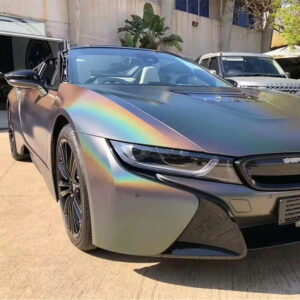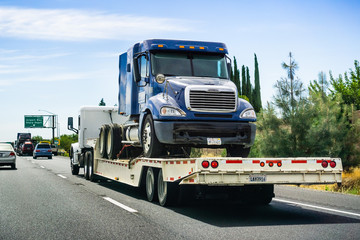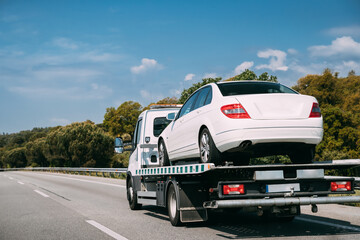Home » Posts tagged 'auto detailing'
Tag Archives: auto detailing
Car Exterior Detailing – A Multi-Step Process
Car detailing is a multi-step process that goes beyond just washing. Detailers use specialty products to apply surface protectants like paint sealants and ceramic coatings. Always work indoors or in the shade, and ensure all surfaces are cool to the touch. This will prevent premature chemical degradation and water spots. Click here at https://www.perthdetailer.com.au/ for expert services.
Washing

A good detailing job includes a thorough cleaning of all exterior components, including the wheels, tires, and door jambs. It also involves washing the interior, vacuuming the carpeting and mats, cleaning all glass, and scrubbing the dashboard and console. Professional car detailers often use a degreaser to eliminate stubborn dirt and grime. They also clean the engine bay and headlights, which helps maintain performance.
Unlike a typical car wash, a detailing job starts with thoroughly rinsing the vehicle. This not only removes the loose dirt, rock, bug splatter, and pollen that can cause scratching, but it also exposes any surface issues that may be present. This step can also include a clay bar treatment to remove impurities and contaminants that regular detergents can’t.
Once the dirt has been rinsed off, a detailed car is then washed using quality car wash soap and a low pH level. This is done with a wash mitt and clean water to prevent the risk of scratching or damaging the paint finish.
After the washing is complete, the detailing technician may then use a wax or protectant on all surfaces. This process can also include applying a clear coat to reduce the sun’s harmful UV rays that can fade paint and promote oxidation.
Keeping your car in tip-top shape is important to maintaining its value and safety. A thorough car detailing service can help keep the paint in pristine condition, minimize surface scratches, and extend the life of your vehicle.
When you choose to have your car detailed, make sure that the company is experienced and knows how to perform each process to ensure the best results. They should also know how to work with a wide range of vehicles and be able to tailor the service to each one. This way, you can be confident that your vehicle will leave the shop looking its best and feeling brand new.
Clay Bar Removal
Your car is constantly exposed to microscopic particles of dirt, road grime, bird droppings, industrial fallout, and more that stick to the paint surface. Even with regular washing and waxing, these contaminants can remain trapped in the paint and dull its appearance over time. A clay bar removes these stuck-on contaminants without scratching the paint.
When used in conjunction with a good decontamination product, a clay bar can create a truly stunning finish on your vehicle’s paint. A clay bar is a soft, pliable material that’s designed to pick up and pull away the contaminants embedded in your paint. A clay bar doesn’t have any abrasives, unlike sandpaper or other rubbing compounds that can scratch the paint. It’s important to use a quality detailing clay bar and work only one body panel at a time so you don’t drop the clay on the ground and scratch your paint.
A clay bar is also a great choice for the textured and porous surfaces on your vehicle, like wheel wells, rocker panels, bumpers, mirrors, and more. A clay bar will clean these textured areas as well as the smooth painted surfaces.
To use a clay bar, you’ll need some sort of lubrication on your hands and the surface you’re working on. Spray a small amount of detailer or clay lubricant on the surface you’re working on and then rub the clay across it. Keep re-spraying the bar with the lubricant as it gets dirty. Once the clay is clean and feels smooth, fold it over and use it on the next area you’re cleaning.
Lastly, you can use a clay bar to remove stubborn contaminants from the black plastic trim and rubber on your car. To do this, spray a little car plastic restorer onto a microfiber towel and rub it into the textured or porous surfaces on your car.
Many of these contaminants are too microscopic to see with the naked eye, but they can still do a lot of damage over time. They can block fresh wax from adhering to the surface, cause polish and wax to oxidize faster, and prevent light from reflecting off of the clear coat as it should. Using a clay bar to remove these embedded contaminants will help your car look cleaner and maintain its value.
Paint Decontamination
Car decontamination is a crucial step in the detailing process. The goal of decontamination is to remove all of the contaminants, fallout, and debris from your vehicle’s paint surface so that it will be ready for a new layer of protection (wax, sealant, or coating). This step ensures that all of the products will bond to a clean and healthy-looking surface. Depending on the level of contamination, there may be some mechanical or chemical decontamination needed.
The first stage of car decontamination is usually the ‘decon wash’, which will help to remove some of the more harmful and ingrained contaminants. This stage will typically include the use of a product such as iron removal or tar remover. These products will be sprayed on the surface of your paint and then rubbed in with an applicator or sponge to break down these contaminants and make them easier to wash off the car.
After the decon wash, it is a good idea to do a full decontamination using either a clay bar or clay mitt. This step will remove the bonded contaminants, which are often found in areas where bugs have hit the body or where there is a build-up of tar and asphalt. It is also a great time to get rid of any contaminants on the glass and chrome as well.
Clay bars and clay mitts can be bought at your local auto parts store. They are inexpensive, and you can get them in various sizes, including 100-gram and 200-gram packs. You will also need a product such as a clay lubricant, which can be purchased online and at most auto parts stores.
After the decontamination is complete, it is a good idea to take care of any exterior plastic trim by spraying a product onto an applicator pad and then rubbing it into all of the exterior plastics of your vehicle. This will not only make the plastics look much better, but it will also lubricate them, which can prevent them from seizing up and needing replacement.
Paint Sealant
The last step in the exterior car detailing process is to protect your work by applying a coat of wax or sealant. There are many products to choose from ranging from traditional carnauba waxes, which have been the industry standby for decades, to high-tech ceramic coatings and synthetic paint sealants.
You can also select a product based on the level of shine you desire. Some sealants offer a high-gloss finish that will grab attention while others have more of a satin finish, which is perfect for some owners who want to avoid glare and keep the appearance more subtle. The environment you live in will also play a role in how often you need to re-apply the sealant.
Once you’ve applied your product of choice, you should allow it to cure for about a week before driving the vehicle again. At this point, it will be protected from harmful UV rays and the chemicals in road salt, bug splatter, tree sap, and bird droppings. It will also be resistant to water spots, smudges, and other common automotive contaminants.
Before you apply your car wax or sealant, make sure the surface is free of any contamination like tar, bug splatter, or other contaminants. Then, follow the application instructions for your chosen product to ensure a clean, streak-free finish.
There are both solvent-based and water-based car waxes and sealants, so read the product’s description to determine what type of finish you need for your vehicle. Solvent-based products will require a respirator and a well-ventilated area because they will release volatile organic compounds (VOCs) into the air as they evaporate. Water-based products, on the other hand, will not release any VOCs into the air and can be used in any indoor area.
Before you apply your paint protection product, it’s a good idea to clean the plastic trim and windows again with a degreaser. If the plastic trim has become dull and brittle over time, you can give it new life. Simply spray the product on a microfiber applicator pad and wipe it over the plastics, then buff the plastics with another clean towel.
What You Should Know About Car Wraps
Sarasota Car Wraps are a great way to draw attention to your company’s message or logo. They also provide a cost-effective alternative to repainting.

Car wraps come in an almost endless array of colors and designs. They can even mimic other materials like carbon fiber and leather. However, finding a shop with an experienced team is key.
Car wraps offer the ability to transform your vehicle with a unique, customized, and permanent look. They are an excellent choice for promoting your business or brand, offering much more flexibility than painted graphics or traditional vinyl lettering for vehicles. They also provide an extra layer of protection to your paint job from the hostile elements like UV exposure, bird droppings, hard water deposits, road salt, tree sap, and more. They can also be easily removed, allowing you to return your car to its original condition.
The color and design of your wrap can be as simple or complex as you want. Bold colors can convey a sense of energy or power while more neutral hues can promote a professional, elegant image. A wrap’s colors should also coordinate with the accents on your vehicle like wheels, badges, and windows. For example, a sleek sports car could benefit from wrap colors that match the red brake calipers or wheels. Conversely, an SUV would look great with wrap colors that complement its rugged features.
Once you have decided on a design or style, your installer will prepare the vehicle for application. This includes a thorough wash and possibly a power wash in order to ensure that the surface is smooth. The shop may also remove the bumper covers, headlights, and taillights in order to access difficult areas for better application.
Wraps come in many different finishes and textures, from glossy or matte to brushed or carbon fiber. Regardless of the texture, your wrap can be printed with anything from a simple graphic to a full-color photo. Some even have a textured finish that can be felt when you run your hand over it.
Aside from the visuals, the durability of your wrap is important as well. Most car wraps are rated to last five years or more without fading, chipping, or peeling. They are also easy to maintain, as they simply require washing with mild pH-balanced soap and water. They can also be repaired if they get scratched or damaged. This makes them a wise investment for drivers who are interested in changing their car’s appearance but want to safeguard their original paint.
Vinyl Finishes
The color and design elements of your car wrap are important, but you should also consider the finish. The type of finish will affect how long the wrap lasts, how it looks and feels to the touch, and whether it is suitable for your vehicle. There are several different finishes available, including gloss, matte, metallic and textured vinyls. Each of these finishes has a distinct visual and tactile effect that can make your vehicle stand out.
Matte gunmetal gray, for example, has a non-reflective matte texture and muted hue that exudes robust modernity. Glossy black, on the other hand, is a classic that exudes a subtle allure and sophisticated charm. And glossy metallic vampire red evokes a daring essence that captivates observers.
Unlike paint, which is typically solid or two-toned (for that popular two-toned look), car wraps can be customized with a wide range of imagery, graphics and text. Moreover, they can protect the original paintwork by acting as a barrier against scratches, fading and other environmental damage. They can even be removed without damaging the paint underneath, allowing for easy restoration or change of appearance in the future.
When deciding on a wrap, you must first decide whether you want the wrap to cover your entire car or just a section. This will influence how much it costs, as well as the amount of work needed to prep your vehicle for the application. It is important to note that a wrap will not hide imperfections on your existing car, such as dings and scratches, so it’s best to get these repaired before applying the wrap. Likewise, rust or chipped paint can cause the decals to adhere poorly.
Depending on the material and quality, a wrap can last 2-10 years, or longer if properly cared for. Storing your vehicle indoors overnight, not parking under trees, such as maple or elm, that drop sap and keeping the vehicle out of direct sunlight will all help extend the lifespan of a wrap.
Installation
Whether you’re an individual who wants to enhance the appearance of your vehicle or a company seeking to promote its brand, car wraps offer a cost-effective alternative to painting your vehicles. Car wrapping can also be quicker to apply, which allows you to get your vehicles back on the road sooner. However, it’s important to know the process of car wrapping to ensure that you receive a high-quality finished product.
Before applying a car wrap, the shop that’s doing it will thoroughly clean the surface. This includes using a degreaser to remove any impurities, which could affect the adherence of the vinyl. This also enables the installer to easily work around and through obstacles like door handles, mirrors, and trims. In addition, it’s important that the shop works on a warm day, as vinyl and adhesive work best at about 68 degrees.
Once the vehicle has been cleaned, it’s recommended to let the wrap dry. This may take a few hours. During this time, the installer will likely dismantle the vehicle, including removing the bumpers, headlights, and taillights. This enables the installer to reach hard-to-reach areas and tuck the vinyl into the contours of the body panels. It’s also crucial that any hindrances are removed, as vinyl can easily tear or peel if it’s caught on something.
The next step is to design the wrap. This can be done by hiring a graphic designer or using a template provided by the wrap manufacturer. It’s important that the design fits properly to scale and that it matches the printer file requirements of the wrap material. The designer should also Photoshop the design onto a photo of the vehicle to check for any issues.
Once the design has been approved, it’s time to print the wrap. This is typically done by a large-format printer that can handle the dimensions of the vehicle. Once the wrap has been printed, it’s applied to the vehicle by a team of skilled installers. This can take a few hours, but it’s essential that the installation is completed correctly to prevent bubbles and wrinkles.
Maintenance
Car wraps can be more durable than a paint job, but they can still be damaged by weather and road debris. It is important to get any damage fixed as soon as possible to prevent it from worsening over time and compromising the integrity of the wrap.
The easiest way to protect your car wrap is to keep it clean. Washing it regularly with a gentle soap solution will help remove dirt and road grime. You should avoid using harsh chemicals or abrasive tools that could damage the wrap. If you do need to use a chemical cleaner, test it on a small section of the wrap before applying it to your entire vehicle.
Regularly waxing your vehicle will also help to maintain its appearance and prolong the life of the wrap. However, the most important step is to ensure that the body of your vehicle is free of cracks and chips. These can scratch the surface of your wrap, causing it to lose its sheen and dull in color.
Another thing to remember is to be careful when driving your car. It is not a good idea to take it off-road or on gravel roads, and you should slow down when driving over potholes and other uneven surfaces. The sharp edges of rocks and pebbles can easily scratch a vinyl car wrap.
Car wraps are an excellent choice for personalizing your vehicle or promoting a business. They offer a more cost-effective and versatile option than painting. In addition, they can be quickly and easily removed if you decide to sell your vehicle or return it to its original state. A new paint job, on the other hand, will likely decrease your resale value because potential buyers are unlikely to want an unconventional color.
It is also worth noting that wrapping your car is a much faster process than painting it. While a paint job can take days, a car wrap will usually be completed within hours. This is especially true if the car has been pre-wrapped by an experienced team of professional installers.



